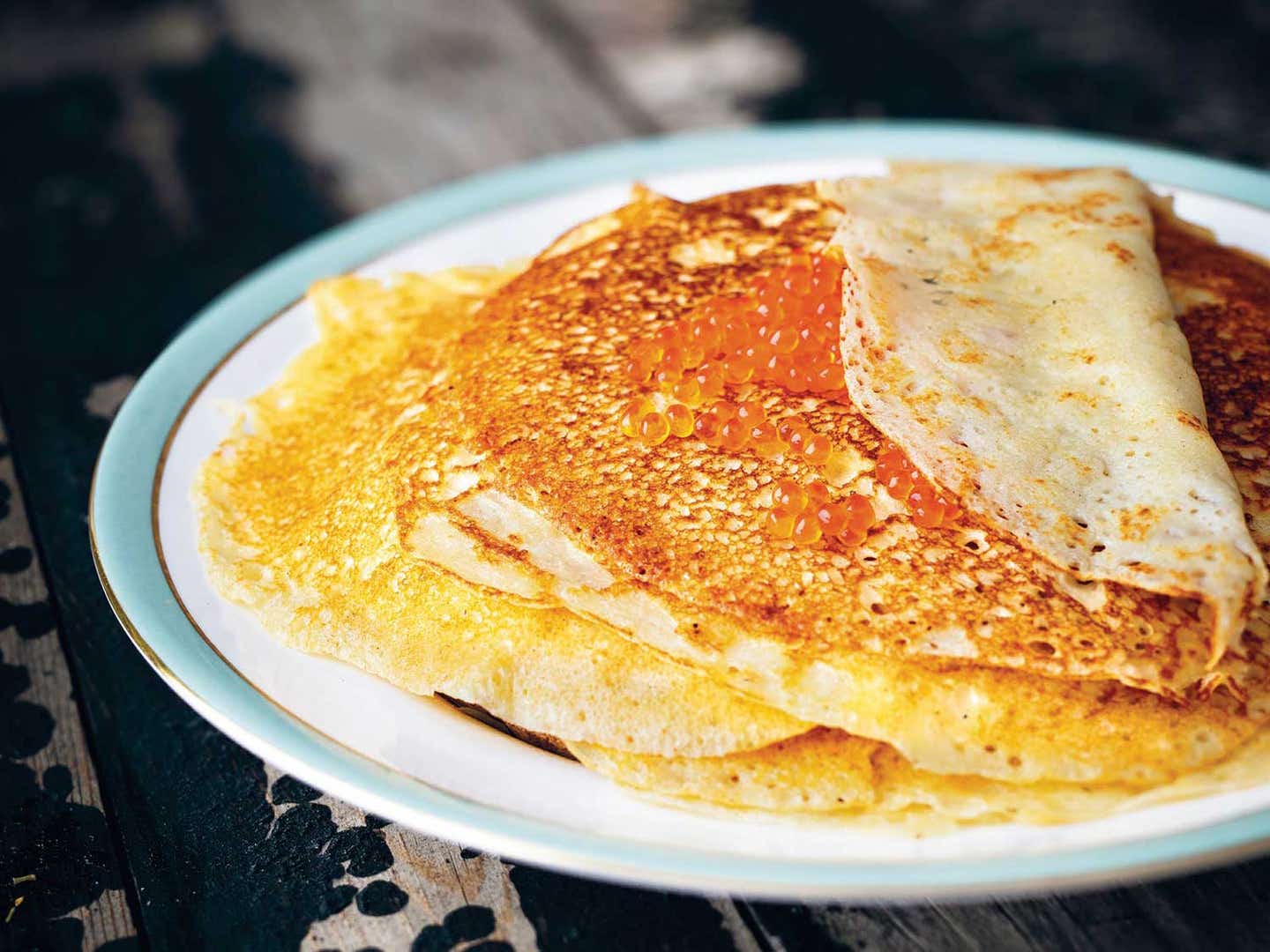Blini

These raised pancakes are one of Russia’s most beloved foods. Thicker than crêpes but less dense than flapjacks, they’re wonderfully porous and perfect for soaking up butter. Many different types of blini exist, but cookbook author Darra Goldstein likes this version, which is adapted from her recipe in Beyond the North Wind: Russia in Recipes and Lore, and made with an equal mix of buckwheat and all-purpose flours.
Look for buckwheat flour ground from whole groats (the hulled seeds of the buckwheat plant). If you can’t find it, you can finely grind some whole roasted buckwheat groats in a coffee grinder and either use a full cup of that flour for a hearty taste or mix it with pale buckwheat flour for a somewhat more subtle flavor. Don’t fret about the first pancake you make, which rarely turns out well. As the Russians say, “The first pancake’s a lump.” You’ll quickly get the hang of it. These blini can be topped with any of the classic accompaniments, but they are so good on their own that Goldstein often just adds melted butter and a sprinkling of tolokno (toasted oat flour).
Featured in: Russia’s Butter-Soaked Bacchanal
Equipment
Ingredients
- 1 packet active dry yeast (2¼ tsp.)
- 1 tsp. sugar
- 2¾ cups lukewarm whole milk, divided, plus more as needed
- ¼ cup unsalted butter, melted, plus more for drizzling
- 1 cup buckwheat flour
- 1 cup all-purpose flour
- ¾ tsp. kosher salt
- 3 large eggs, separated
- Anson Mills toasted oat flour, for garnish (optional)
Instructions
Step 1
Step 2
Step 3
- In a large bowl, stir together the yeast, sugar, and ¼ cup of the warm milk and set aside until the mixture is foamy, about 5 minutes. Whisk in the remaining milk, the butter, buckwheat and all-purpose flours, salt, and egg yolks until no lumps remain, then cover the bowl and set aside in a warm place until doubled in volume, about 1 hour.
- In a clean, medium bowl, beat the egg whites just until they begin to hold stiff peaks. Use a silicone spatula to gently fold the whites into the batter then set it aside to rest at room temperature for 30 minutes more.
- Heat an 8-inch cast iron crêpe pan or nonstick skillet over medium heat and brush the surface lightly with vegetable oil. When the pan is hot, test the consistency of the batter by pouring a little out onto the pan. (The batter should pour easily enough to swirl over the surface in a thin layer; if it’s too thick, gently fold in a little more milk.) Pour ¼ cup of batter onto the pan, then quickly pick it up and swirl gently, so that the batter forms a thin, even round, 5–6 inches in diameter. Cook over medium heat until small bubbles appear on the surface, about 1 minute. Flip the pancake with a spatula and continue cooking on the other side just until cooked through and faintly colored, about 30 seconds more. Turn the pancake out onto a plate and repeat with the remaining batter, adding more oil to the pan as needed to prevent sticking. Blini are best served hot from the pan, and ideally each person is served a stack of three. If they must be kept for later, pile them in a deep dish, brushing each one with butter, and cover with a clean, dry kitchen towel. Note: If you prefer to make small, appetizer-sized blini to serve American-style, use just a tablespoon of batter for each pancake. Small blini are most easily made in a Scandinavian plättpanna that has seven indentations. This recipe will make about 40 mini blini.
Keep Reading
Continue to Next Story










